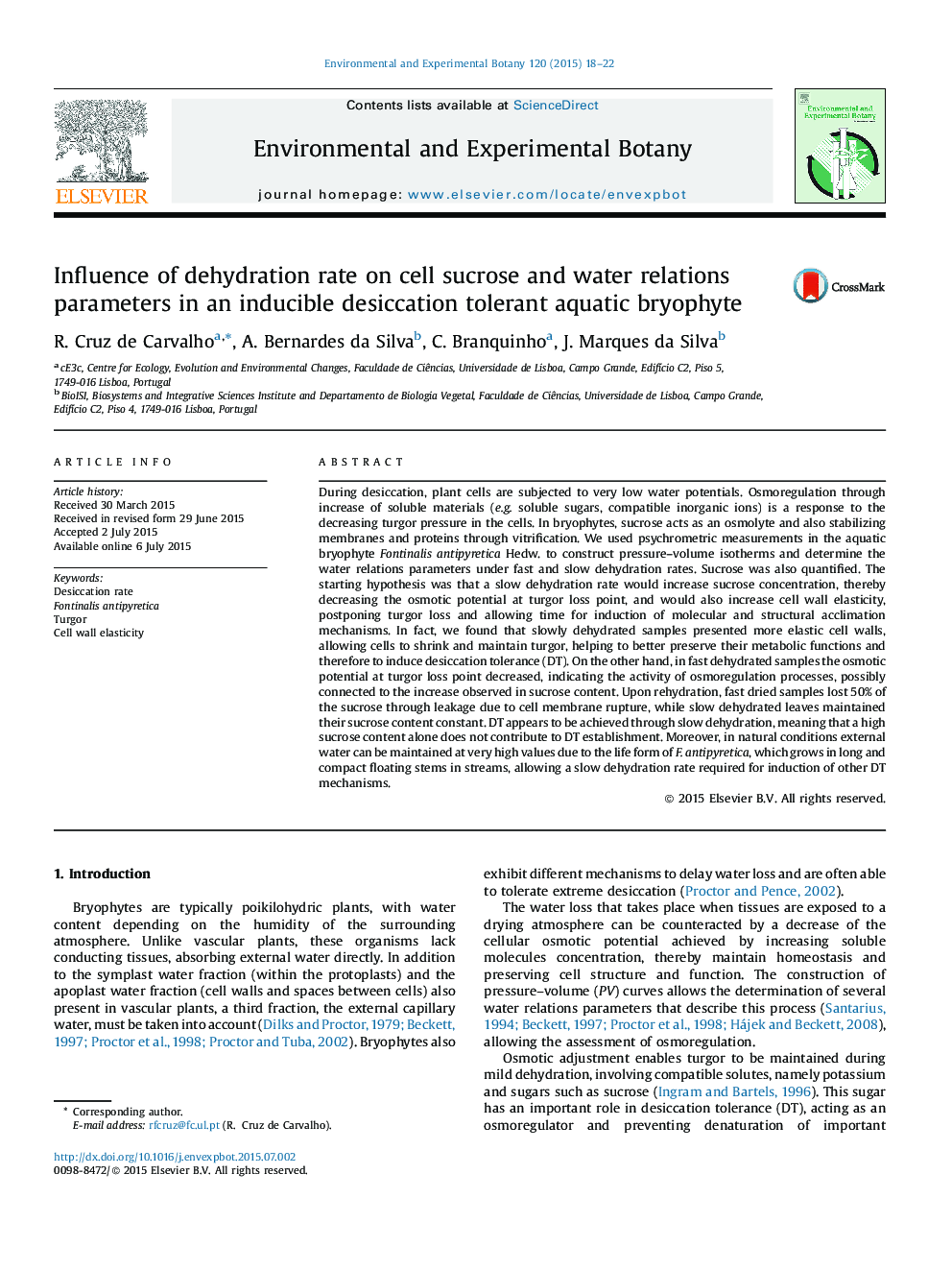| Article ID | Journal | Published Year | Pages | File Type |
|---|---|---|---|---|
| 4554193 | Environmental and Experimental Botany | 2015 | 5 Pages |
•Slow dehydration show higher elasticity of cell walls.•Fast dehydration show higher sucrose accumulation.•Upon rehydration after fast dehydration leaves lose 50% of the sucrose through leakage.•Sucrose accumulation is not enough to establish desiccation tolerance.•Life form may allow slow dehydration required for induction of desiccation tolerance.
During desiccation, plant cells are subjected to very low water potentials. Osmoregulation through increase of soluble materials (e.g. soluble sugars, compatible inorganic ions) is a response to the decreasing turgor pressure in the cells. In bryophytes, sucrose acts as an osmolyte and also stabilizing membranes and proteins through vitrification. We used psychrometric measurements in the aquatic bryophyte Fontinalis antipyretica Hedw. to construct pressure–volume isotherms and determine the water relations parameters under fast and slow dehydration rates. Sucrose was also quantified. The starting hypothesis was that a slow dehydration rate would increase sucrose concentration, thereby decreasing the osmotic potential at turgor loss point, and would also increase cell wall elasticity, postponing turgor loss and allowing time for induction of molecular and structural acclimation mechanisms. In fact, we found that slowly dehydrated samples presented more elastic cell walls, allowing cells to shrink and maintain turgor, helping to better preserve their metabolic functions and therefore to induce desiccation tolerance (DT). On the other hand, in fast dehydrated samples the osmotic potential at turgor loss point decreased, indicating the activity of osmoregulation processes, possibly connected to the increase observed in sucrose content. Upon rehydration, fast dried samples lost 50% of the sucrose through leakage due to cell membrane rupture, while slow dehydrated leaves maintained their sucrose content constant. DT appears to be achieved through slow dehydration, meaning that a high sucrose content alone does not contribute to DT establishment. Moreover, in natural conditions external water can be maintained at very high values due to the life form of F. antipyretica, which grows in long and compact floating stems in streams, allowing a slow dehydration rate required for induction of other DT mechanisms.
